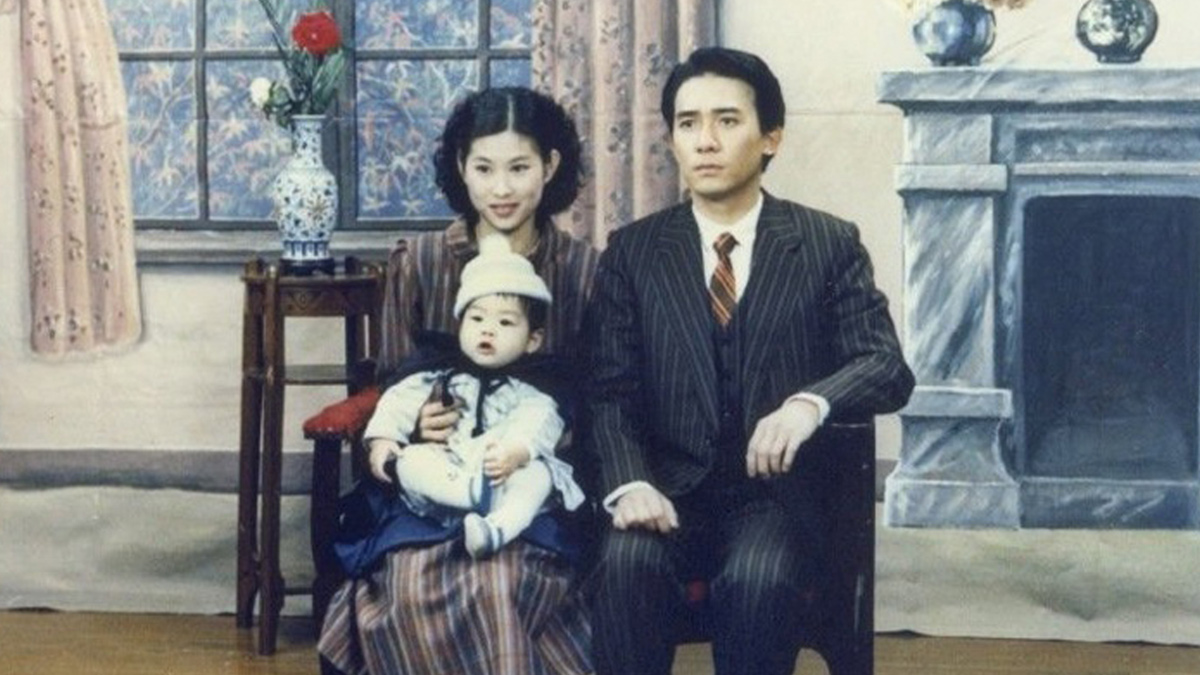
(C) Pia Co., Ltd.
“A City of Sadness” is an early collection of Hou Hsiao-hsien’s records of historical events in Taiwan.
2021.04.21
The end of Taiwanese new cinema
As the movie draws to a close, a dark shadow falls over the Hayashi family. Although Bunkiyo was once arrested, he somehow managed to escape execution and returns home to marry Hiromi, a nurse who adores him, but as his friends are being killed one after another, he realizes that there is nowhere for him to escape. . Having made up his mind, he goes to a photo studio to take a commemorative photo with his wife and newborn son. It is surprising that his last appearance was in this commemorative photo shoot. Behind them lined up in chairs, a backdrop that resembles the script of a play hangs down. In a film that takes advantage of the depth of space, Tony Léon: The Professional disappears, leaving behind a picture that completely eliminates the richness of space and sense of perspective.
``A City of Sadness'' not only received international acclaim, but also generated a great deal of attention in Taiwan. The portrayal of the February 28 Incident has been controversial, and has even sparked political debate. However, it was a huge success at the box office, overturning the conventional wisdom that ``Taiwanese New Cinema movies are highly artistic but fail to attract customers.'' On the other hand, the Taiwanese New Cinema movement itself was effectively brought to an end with the huge success of ``A City of Sadness''. Of course, they continued to release films energetically and received international acclaim, but their activities became more individualized. It was only natural that a movement of young people gathered together based on their enthusiasm for movies would reach a certain point and lose its role.
After City of A City of Sadness, Hou Hsiao-hsien directed Dream Life (1993), starring Li Tianlu, who played the elder of the Lin family. Here, memories of Taiwan under Japanese rule are shown, shortly before ``A City of Sadness.'' In 1991, his ally Edward Yang published `` Kuling Street Juvenile Murder Case ''. Yang depicts Taipei in the early 1960s. After the February 28 Incident depicted in ``A City of Sadness'', it was the era of white terror that occurred in Taiwan, where martial law continued.
[References]
Tianwen Zhu, “Hou Hsiao-hsien and My Taiwanese New Cinema” edited and translated by Yuko Higuchi and Fumiko Kosaka, Takeshobo, 2021.
Saburo Koyama et al., eds., New Edition: Taiwanese Cinema: 30 Years of Social Change (Taiwanese New Cinema), Koyo Shobo, 2014.
Shizue Tamura, “Discovering Taiwan: The “unknown” island depicted in movies,” Asahi Shimbun, 1997.
"Hou Xiaoxian's complete record of his dream life" (Asahi One Theme Magazine No. 16), Asahi Shimbun, 1993.
"A City of Sadness" theatrical pamphlet, Toho Publishing Division, 1990.
Shizue Tamura, “Taiwan as seen on the other side of the screen”, Tabata Shoten, 1989.
Text: Rie Tsukinaga
Film writer and editor. Editor of the magazine "Eiga Yokocho". He writes film reviews, columns, and interviews for Asahi Shimbun, Metropolitana, Weekly Bunshun, iD JAPAN, etc. He also edits books and movie pamphlets under the name Eiga Bar Editorial Office. Currently in charge of MC for the web program "Katsuben Cinema Club". eigasakaba.net
“Taiwan Masterpiece Masterpiece Selection 2021 – Hou Hsiao-hsien’s 40th Anniversary of Director’s Debut <Hou Hsiao-Hsien Special Feature>”
Held at Shinjuku K's cinema from April 17th (Saturday) to June 11th (Friday), 2021, and other events nationwide
(C) Pia Co., Ltd.

